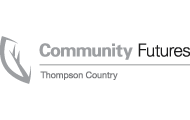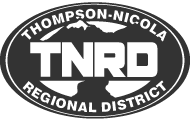We Work with Awesome People






Incorporating Social Media into Your Business Strategy
What comes to mind when thinking about Social Media? Do you think of communication platforms such as Snapchat? Facebook? Twitter? Or perhaps you think of Chat Rooms and Blogs? If you are you’re on the right path, but to really understand it and how it can be a powerful tool incorporated into your next business strategy we have to delve deeper and learn about it on a more personal level.
The popularity of social media and the science behind it stems from our inherent human desires to connect with others. Social Media as it’s referred to today can be best described as an outlet used to connect with others primarily in the digital world.
Prior to developed language, our ancestors communicated through drawings, sign language and/or objects. Just as we evolved as humans, so has the way we communicate with one another. Social Media in actuality, is just the latest word to describe what we’ve already been doing for centuries.
Communication theorists describe communication as a tool in which we exercise our rights to influence our beliefs upon others, to bring out the changes we wish to see in the world, to establish trust and love, to build and maintain relationships with others just to name a few. It’s how we relate, compare, and survive. Although more complex in humans, methods of communication can also be found amongst neighbouring species from birds to insects. Our desire to communicate is so strong that it’s practically impossible to ignore.
The Rise of Communication in the Digital World
If we take into account what theorists have to say about why we communicate, it’s pretty easy to see why connecting over the digital world has gained so much momentum. Let’s take a step back to the early 80’s. Prior to the days of online shopping and e-books; back to the days of waiting for letters in the mail and magazine subscriptions arriving a month after its publication date. If a business was to sell their product or service, their audience is often limited to their immediate surroundings as well as by the financial investment they’re willing to make promoting it. Now think of a consumer who’s had a bad experience at a restaurant. Back in the 80’s their experience may possibly be shared amongst a local group of friends which may spread to neighbouring cities. Not too much of an impact right?
The strength and rise of how we communicate digitally within Social Media communities, comes from its ability to share information across the globe and with millions upon millions of people you’ve never met. The downfall or up-rise (depending how you view it), can make businesses more accountable for unprofessional behaviours’ towards their guests as people are now able to share their views on a global scale. On the flip side, it also provides opportunities for people who loved a restaurant and had excellent experience an outlet to shout it out loud. When customers are truly happy, it takes no time for them to upload it to Instagram and tag it ‘#foodie’ “you must try this restaurant!”
Social Media Stats
Let’s take a look at Instagram which was recently acquired by Facebook (Facebook being one of the largest social media platforms out today). At the time this article was written almost 27 million people have tagged their photos with the word #foodie. Instagram uses hashtags (#) and the words that follow (foodie) as a way of connecting like photos similar to that of ‘keywords’. Click on one of the hashtags and you will be immediately connected to other photos that share those same keywords. The key to wide exposure is to carefully select the right keywords to describe your image and are easily identifiable by a mass audience. Other popular hashtag keywords include #love: 696 million, #music: at 101 million, #instagood: at 314 million, #happy: 230 million, and #fashion: 250 million.
So what do all these words mean? Imagine your business is a restaurant. A customer enjoyed the experience and the food was delightful. They can’t wait to share it on social media and may decide to share it on multiple platforms including Trip Advisor, Facebook, and/or Instagram. They take a photo of their food and upload it to Instagram and give it a description of “Wow this place is unbelievable, you have to try the chocolate soufflé. It literally melted in my mouth! #restaurant #foodie #chocolate #ChocolateSouffle #gourmet #natural #seattle #usa #foodporn #delicious #omg #dessert”. At first glance looking at this may not mean much but for other users who are searching for recent posts with these hashtags (or categories) will be able to locate this particular image quickly.
How Many People Can These Hashtags Can Potentially Reach
To get a real world sense of how many people take the time to incorporate hashtags into their posts, take a look at these staggering figures below. Hash-tagging has become the norm when sharing photos and sources of information that it’s widely accepted and behave the same across multiple social media platforms. By using the hashtags written above, here are how many people have used these same keywords below.
#restaurant – 8 million
#foodie – 26 million
#chocolate – 35 million
#ChocolateSouffle – 13 thousand
#gourmet – 2 million
#natural – 20 million
#seattle – 8 million
#usa – 30 million
#foodporn – 77 million
#delicious – 41 million
#omg – 13 million
#dessert – 18 million
In one photo alone, they have targeted more traffic than any other form of shared media. They’ve reached strangers and family members far and wide in an instant. They’ve reached tourists who are currently in Seattle looking for a place to eat dessert; they’ve targeted chocolate lovers, locals who may not have heard of your restaurant or are currently looking for restaurants within a 2 block radius. Now that’s power in numbers.
Other statistics that may be of interest in 2012, social media sites are a primary news source ranking at 27.8% which is just a pinch below newspapers at 28.8% and above radio at 18.8% and print publications at 6%. 35 global heads of state, every US cabinet agency, 84% of US state governors, and every major candidate for US President, and more than 40% of top global religious leaders are on twitter. Americans spent 74 billion minutes on social media via home computer. Source: http://socialnetworking.procon.org/ .
Your Online Image
As with all methods of how we communicate, there are pros and cons that need to be addressed. When a business decides it’s ready to conquer the digital world of social media into their business model, they need to assess how they are going to handle the flow of information to the public whether it’s good or bad. What gets posted? Who is going to maintain it? They also need to ask how valuable will this be for my business? If your goal is to introduce a higher level customer service than participating in social media platforms just makes great business sense. You’ll be able to address and connect with your consumers like never before.
How Social Media Has Shaped Our Modern Day World: Pros
Crime Prevention: Since its introduction to the digital world, social media has helped policing agencies globally to solving crimes and catching criminals who brag about their quests online. It has helped them to find missing children by announcing Amber Alerts which can spread to an entire province within seconds. It has helped victims of violent crimes to have their story solidified by a passerby who caught the crime on video and uploaded it to YouTube. Finally, it has helped in policing the police who have chosen to not to live up to their promise of serving and protecting the community we live in, or government officials who are not playing by the books. It holds people (all people) accountable for their actions.
New Connections and Networking Opportunities: Social media has assisted people from all over the world to connect with one another. It has built friendships, sparked new romances, and helped families living across the globe to stay connected like never before. Grandmothers in Europe can watch their grandchildren grow who live in other countries. It helps to find others who share similar passions and interests to meet up and participate in group functions. It can help a business’s connect with their customers by communicating with them directly. If a customer uploads a photo and gives your restaurant a shout out about how amazing their experience was, a reply and acknowledgement of the appreciation can go miles for your business. Saying thanks is a great way to show your customers you care and you are in touch with what’s going on.
Quality of Life: For some people communicating with others can be difficult. It helps those with social phobias or depression to connect with others who understand their struggles or even just to talk to someone else about life in general.
Provides Employment: Companies more than ever are realizing the power of social media platforms and as a result have hired writing professionals or social media experts to handle incoming and outgoing content.
Other pros include: reduced marketing costs, increased sales, generates traffic to your website, improved ranking on search engines, greater customer engagement, access to international markets, conduct market research, global sharing of world events and so much more.
However with every awesome something there is a dark side as well…
In the news it’s no longer uncommon to read about someone getting fired for blasting sensitive company information on social media platforms, or new hires being denied jobs because their ‘online image’ doesn’t fit the image the company wants to be associated with. A lot can be said with videos and images and can be pretty incriminating and hard to explain. People can take different messages and interpretations which can result in incorrect information or sensationalizing events which have blown out of context. There is no privacy on social media platforms.
Other challenges of using social media can include loss of productivity or distraction, less face to face communication, without a clear marketing strategy it can reduce benefits, additional resources may be required to manage flow of content, daily monitoring is required to see the true benefits, greater exposure could introduce negative feedback, and as mentioned sensitive company information is at risk of getting leaked out.
So Should You Participate?
My personal opinion as a web designer and social media user, absolutely! Social media is not going away and is gaining strength and momentum as the years go by. If your business is to move forward alongside technology you have to keep up with it. If not, you are missing out an opportunity to advertise to an entire planet who has made the shift to online mobile entertainment. You don’t have to walk far to see the world staring into their mobile devices. How we use the internet, how we communicate with each other, and what tools we use to communicate with has changed exponentially in this decade. It’s time to embrace and join the masses.






Made in Canada - © 2024 Fresh Brand Marketing - All Rights Reserved.